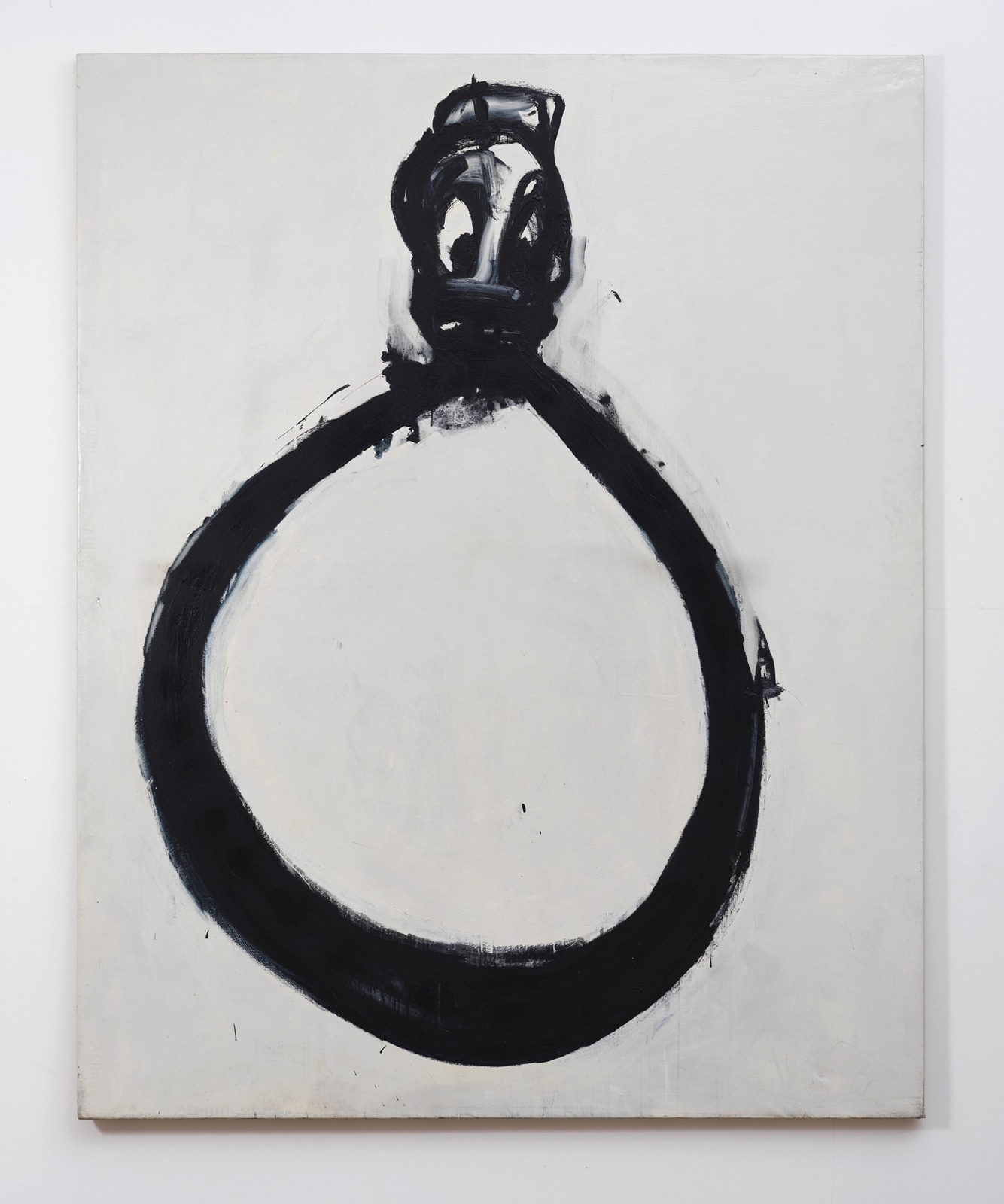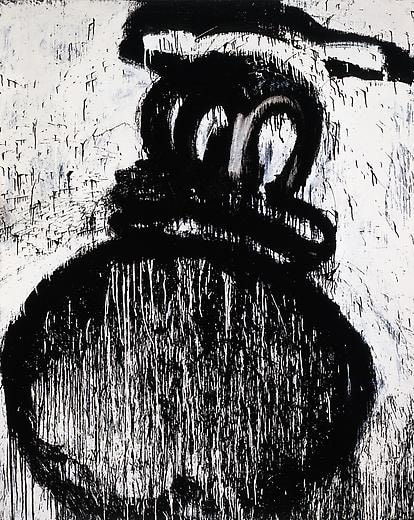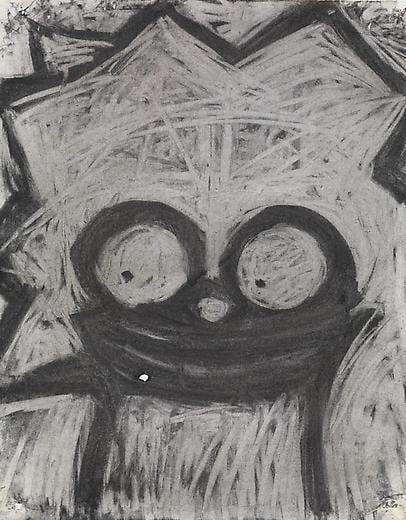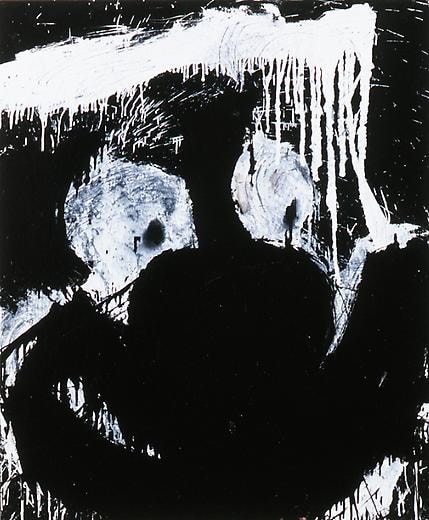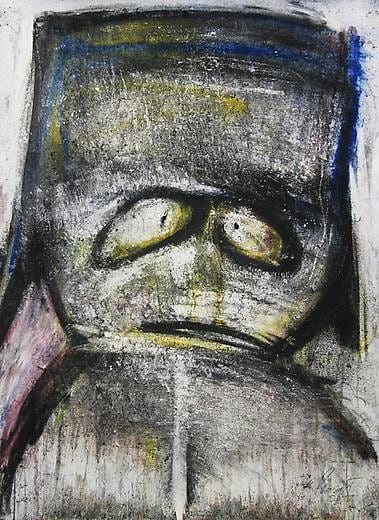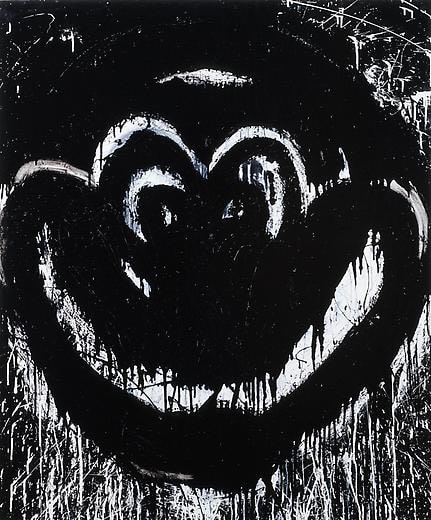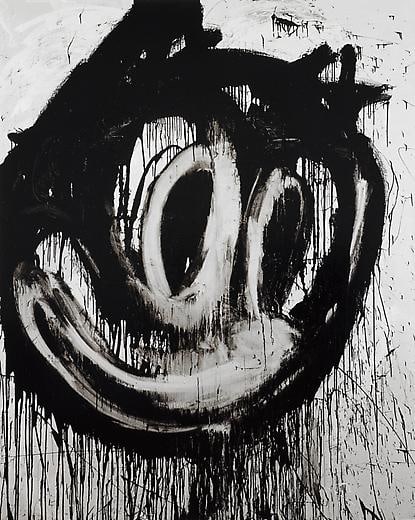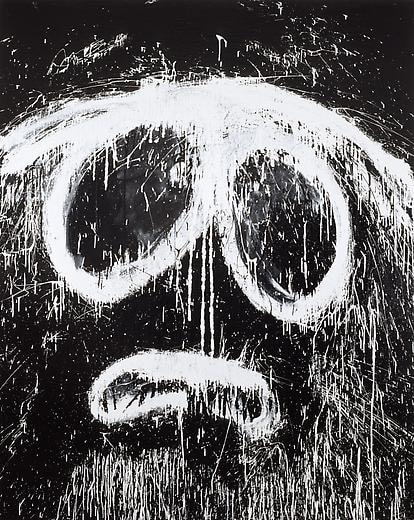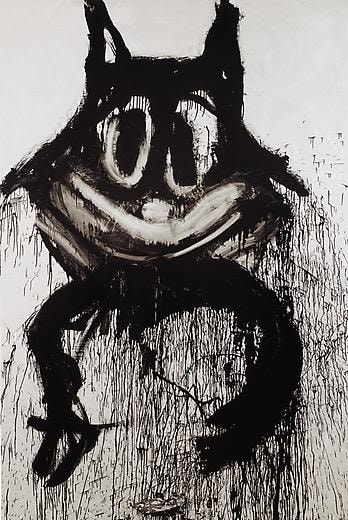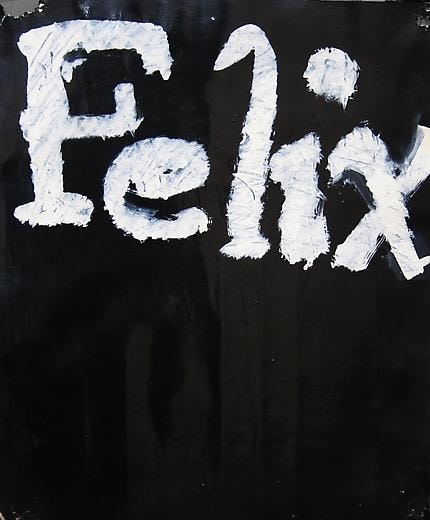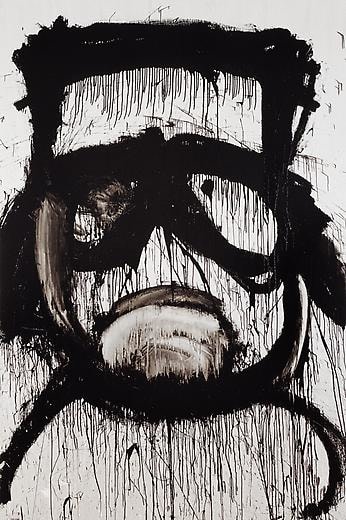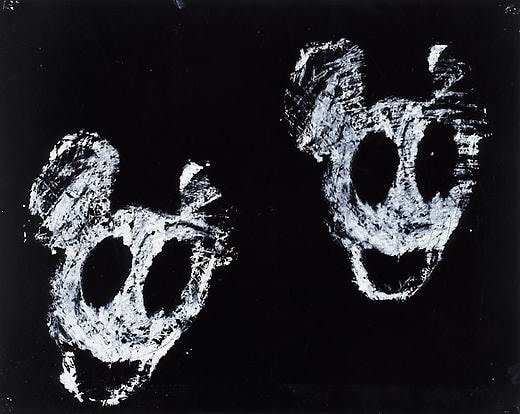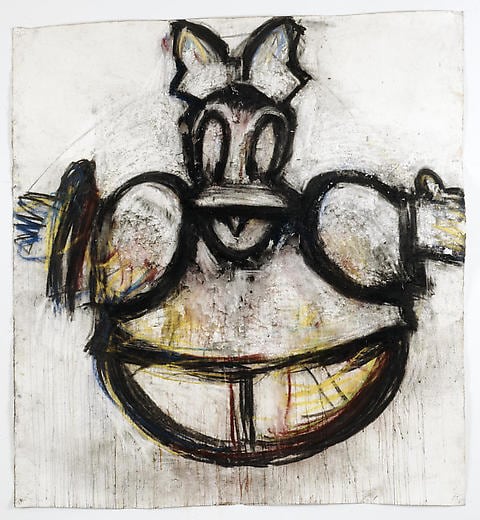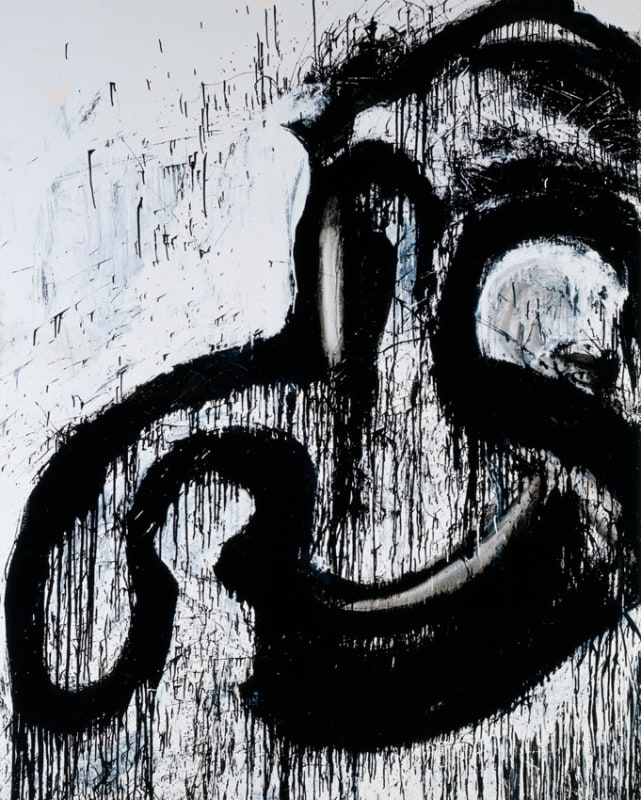
Olive Oil
2009
Enamel on linen
90 x 72 inches
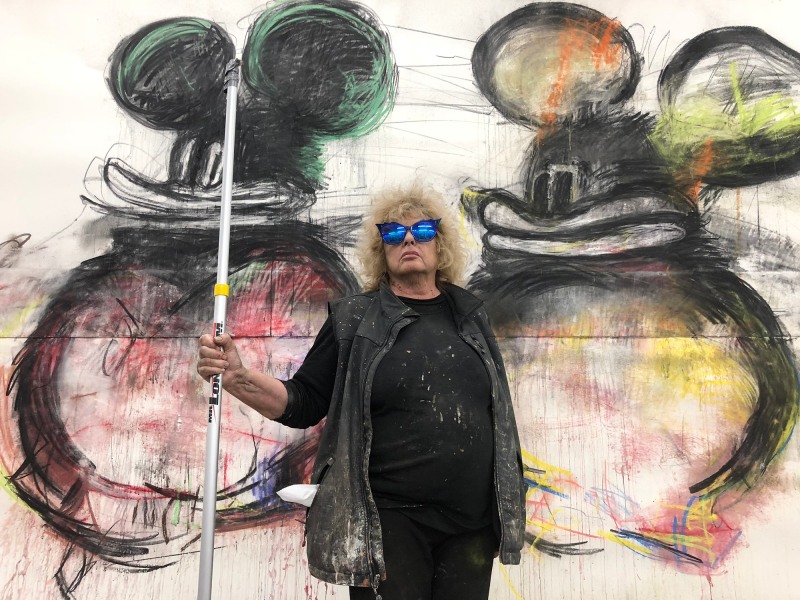
Joyce Pensato (b. 1941, Brooklyn, NY, d. 2019, New York, NY)
Joyce Pensato lived and worked in Brooklyn, New York and studied at the New York Studio School. In her work, she was committed to depicting a baleful transmutation of American cartoon culture—employing her fast, assured, and gestural hand—to shed light on the arguable darkness lurking within our familiar Pop iconography. She was best known for her large-scale paintings which employed a familiar cast of cartoon characters, including Homer Simpson, Groucho Marx, Mickey Mouse, Donald Duck, and a character the artist called “The Juicer.”
She received many awards in her lifetime including The Robert De Niro, Sr. Prize; The Award of Merit Medal for Painting from the American Academy of Arts and Letters; Anonymous Was A Woman Award; Pollock-Krasner Foundation Award; Guggenheim Fellowship; New York Foundation for the Arts; and Mid-Atlantic Arts Foundation.
Her work has been exhibited widely, including solo exhibitions at the Museum of Contemporary Art Chicago, Chicago; Kunstraum Innsbruck, Innsbruck; Modern Art Museum of Fort Worth, Fort Worth; High Museum of Art, Atlanta; Santa Monica Museum of Art, Santa Monica; and the Contemporary Art Museum St. Louis, Saint Louis. Group exhibitions include the Whitney Museum of American Art, New York; ICA Miami, Miami; Kunsten Museum of Modern Art Aalborg, Aalborg; Contemporary Arts Museum Houston, Houston; Centre Pompidou, Paris; and the Speed Museum of Art, Louisville.
Pensato’s work is included in the collections of the Museum of Modern Art, New York; San Francisco Museum of Modern Art, San Francisco; Dallas Museum of Art, Dallas; Hammer Museum, Los Angeles; Museum of Contemporary Art Chicago, Chicago; and FRAC des Pays de la Loire, Carquefou, France.
“For all the humor and goofiness that comes across in these large in-your face paintings, there is something alarming about them. Her humorous, sad sack caricatures barely contain a suppressed rage. Their exaggerated features speak directly to the fractured American psyche, especially when it comes to race, ethnicity, and notions of beauty.”
John Yau, “Paint it Black, Blacker, and Blackest,” Hyperallergic, February 18, 2012

